BOUMEDIENE Houda
Laboratoire INRE
Université de Djilali Liabès-Sidi Bel Abbés
Abstract:The present study is an attempt made to investigate a possible way of using self-assessment method in English as a Foreign Language (EFL) writing classroom. The main objective of this study is to explore the role of self-assessment in developing students’ skills and abilities in their writing process. This research also explores how 50 second year students, at The Department of English – University of Laghouat, perceived their own writing skills and whether this perception is affected by self-assessment practices. To achieve this model, Pre/Posttest and a questionnaire were administrated to the sample of the study. These tools were used to test EFL learners’ level and to measure what they have learnt from using self-assessment strategy. The findings revealed that learners lack the competence of evaluating their pieces of writing; however, it can be developed through applying self-assessment tool in writing classroom. Additionally, the currentwork emphasized the importance of building learners’ autonomy and interaction in their own learning process which will assist them to be successful lifelong learners.
Key words: EFL learners, self-assessment, writing classrooms,writing skills
Introduction
Many students assume that writing is the most difficult subject among the other language skills because the process of writing not only necessitate towrite what we feel, but also to convey a message to the readers. “Assessment of writing is considered as a problematic area, especially when it comes to evaluate the writings of English as Foreign Language (EFL) students” (Brown 2001, p336).Traditionally, the role of assessor usually falls to the lecture. It is often worthwhile to consider involving students in the assessment process. Effective and appropriate use of involving students in the assessment practice can enhance the learning and teaching experiences. One way of increasing the efficiency of assessment is to ask students to work independently of the teacher. The most appropriate tool to assess students’ writing is self-assessment (Lopes, 2015)Self-assessment leads a student to a greater awareness and understanding of him/herself as a learner.
1. Review of the Literature
In classrooms where self-assessment is practiced, students are encouraged to be more active in their learning. The purpose of the assessment for learning is to create self-regulated learners who can leave school able and confident to continue learning throughout their lives. The teacher works with the student to understand and identify any gaps or misconceptions, as well as to assess the students’ knowledge, what she or he needs to learn to improve and extend this knowledge, and how the students can best get that point. In other words, the term assessment refers to all those activities undertaken by the teachers, and their students in assessing themselves, which provide information to be used as feedback to modify the teaching and learning activities in which they are engaged.“Some scholars define self-assessment as students’ judging the quality of their work. This judgment is based on evidence and explicit criteria, for the purpose of doing better work in the future” (Oscarson, 2009). Self-assessment plays an important part in the development of students’ learning. Students can achieve a learning goal only if they understand that goal and can see what they need to do to reach it. Students who have the opportunity to self-assess are seen as active learners, who are responsible for their own learning, and who are aware of when they are learning and when they are not. “The students saw self-assessment as a continuous cognitive process, as well as a product either explicitly or implicitly” (Assis, 2012) There are three kinds of students’ benefits that have been observed in studies conducted by the researchers. The first benefit is cognitive achievement, especially when it comes to evaluate narrative writing skills. Students want to become better writers and they learn how to evaluate their pieces of writing. The second benefit is the students’ motivation. With this benefit students became more confident about their abilities. Students who evaluate themselves have more opportunities to complete and succeed in difficult tasks. The third benefit comes when teachers give the opportunity to participate in their evaluation, and their attitudes toward evaluation became more positive. Self-assessment is a learning tool, “not just an assessment tool for the students. It helps students to develop a growing awareness of how to assess a written work” (Creswell & Miller, 2000)The question of how students can develop a more active and responsible role in their own learning is the starting point to discuss self-assessment as appropriate method to get students independent learners. Moreover, many students continue to feel mystified by teacher assessment practices. Teacher’s editing marks, vague comments, or complicated rubrics that contain confusing detail which give to the student a little information on where they stand and few insights to the steps they need to take to improve.
The main aim of this study is to explore whether the use of self-assessment in the subject of EFL in learning may help to develop language learning skills, and how students perceive self-assessment as a tool to promote their learning process, to set out that task ,the self-assessment is a reliable and valid tool in an EFL classroom.
2. Methodology and Research Design
The focus in this study is on writing, because it is related directly to thinking and the ability to express one’s feelings and thoughts, which is very important in learning and teaching process. As the role of writing in EFL learning increases, the students’ ability to self-assess their EFL writing skills also become progressively important.
This research is guided by three major questions: If the students receive enough training in self-assessment process, will it be an effective tool to assess students writing?Are there alternative assessment tools available which might be used by EFL teachers? Is self-assessment a reliable and valid tool in a writing classroom?
In an attempt to answer the research questions, we are going to test the effectiveness of self- assessment in developing EFL students’ writing performance through an experimental study taking 50 second year students of English at The University of Laghouat as a sample. This study involves two tools: pre-post writing tests and a questionnaire to provide more understanding about how the learners perceive self-assessment and whether it helped them. We formulated pre and post-self-assessment to know better about the participants’ level before and after the use of the self-assessment skills.
3. Data Analysis and Interpretations
In this stage, the students were asked to write a paragraph in which they describe an archaeological area or any other place. The aim of pre-self-assessment is to evaluate students’ writing. When we correct students’ papers, we found that most of students made mistakes in grammar, spelling, punctuation and handwriting .The following table shows the results of pre-self-assessment test.

Table 1: Result of Pre- Test.
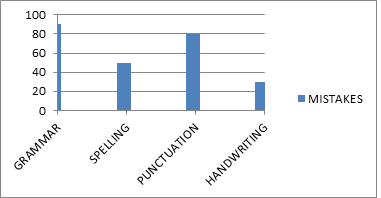
Figure 01: Results of Pre-test.
To conclude, before starting the treatment, students had no idea of assessing their own writing and the task of assessment was done by the teacher like most of conventional classes. Students faced difficulties in their own pieces of writing, because they did not know how to assess their writing by themselves. They did not feel confident with the way they perceive their own works.
Students’ Questionnaire
1. How is your level in EnglishProduction ?

Table 2 :Students’ Level in English Production
According to the results above , the highest percentage of students (50%) claimed that their level in English is average. Others (30%) they said that they are good in English, while some others (20%) stated that they are not good in English. Thus, there is something positive here and that students can judge themselves and hence they can judge their level in writing.
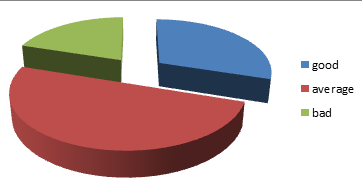
Figure 2 : Students’ Level in English Production
2. How often the teacher gives you the opportunity to interact (ask and answer) ?

Table 2 : Teacher-Students’Dialogue
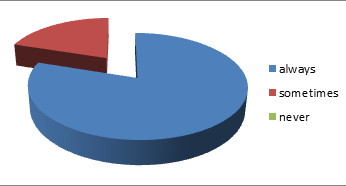
Figure 2 :Teacher-Students’Dialogue
The table above shows that (80%) of students have the opportunities to interact with their teachers about their works. Others (20%) of students are sometimes interacting with their teachers. However, none of students claimed that the teacher gives them the opportunity to interact with him/her.
4. When you interact about your writing in the classroom, is it your own choice or the teacher who asks you to do so?

Table 4: The Students’ Contribution in Interaction
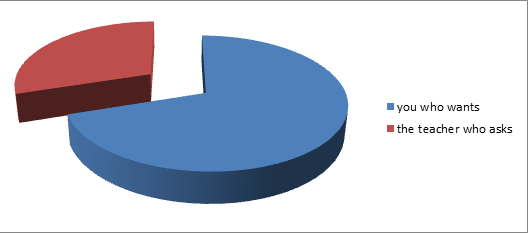
Figure 4: The Students’ Contribution in Interaction
As shown in the table above, (70%)of students want to interact on their weaknesses in writing by themselves.However; (30%) students are urged by the teacher to evaluate their works relying on themselves.
5. Does regular interaction in the classroom help you to assess your own level effectively?

Table 5 :Interaction as a HelpfulWay for Students to Self-Assessment
As table5 and figure 5 demonstrate above, interaction in class is an effective way to practice self-assessment; mainly it permits learners to discuss about their difficulties and weaknesses to the teacher who will try to solve their problems.
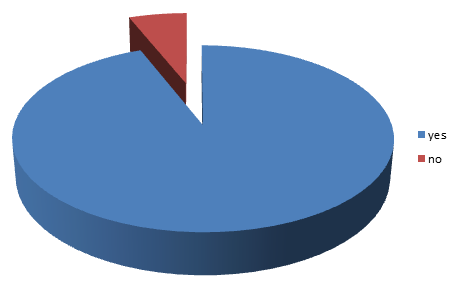
Figure 5 :Interaction as a Helpful Way for Students to Self-Assessment
6. Do you know what does self-assessment mean?

Table 6: Knowing Self-Assessment Concept
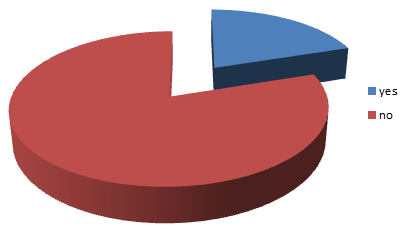
Figure 6: knowing Self- assessment Concept
As shown in the results, the majority of students did not have any idea about the concept of self-assessment though they practice it daily in class with their instructor. Students feel comfortable, and confident about the way they discuss about their works, their weaknesses and their preferences in writing with their teacher.
7. You are familiar now with the method. Have you ever self-assessed your writing?
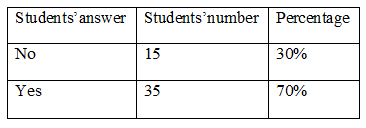
Table 7: Students’ Use of Self-Assessment Method
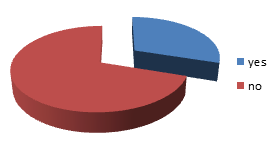
Figure 7: Students’ Use of Self-Assessment Method
The findings show that a great number of students prefer to self-assess their writing, though they are not familiar with the method.They even find it more beneficial than the conventional way of assessmentFor them, it permits them to work independently from the teacher. They believed that this tool enhances their awareness of learning development.
.Analysis of Post-Test
After pre-self-assessment test, we introduced self-assessment tool to the students for the purpose of improving their own writing .Then, we asked them to write a paragraph. We notice that the number of mistakes have decreased, because the use of self-assessment is effective in making the students identify the areas of their weaknesses- so to avoid them and strengths- so to focus on in writing .The following table shows the results of post-test .

Table 8: Results of Posttest.
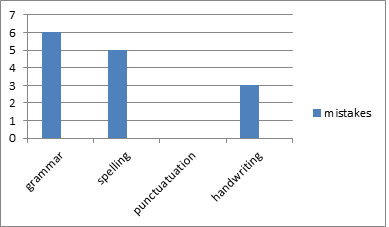
Figure 08: Results of Posttest
To conclude, after introducing self-assessment strategies in a writing classroom, we found that most students improve their writing skills through the decrease in their mistakes’ number. For instance,the number of grammatical mistakes has greatly decreased from 90 to 6 in 50 copies.Also, we notice that the participants, and thanks to self-assessment method, show a good mastery of punctuation use . Therefore, we can say that self-assessment method is a valid, reliableand effectivetool that helps in making students identify and correct their pieces of writing by themselves.
4. Conclusion
According to the results obtained, it is possible to state that Self-Assessment of writing skills is a reliable and valid tool in the context of this specific study, and the sample has improved gradually in writing skills due to the self-assessment techniques. Self-assessment is about promoting learning and achievement, not about grading. Effective Self-Assessment involves students in comparing their work to clear standards and generating feedback for themselves about where they need to make improvements. As a conclusion, most of the students interact about the use of self-assessment in their writing classroom. However, those students who never had a chance to self-assess their writing classroom faced difficulties which appeared in pre-self-assessment test results. In post-self-assessment results, the benefit of self-assessment use appeared when students’ mistakes decrease and their writing ameliorated.The results of this study showed students’ writing skill improved gradually in the treatment period. All the students and the teachers had positive attitudes towards self-assessment. By the use of self-assessment the students have more opportunities to involve in the assessment process and practice it under the teacher’s supervision to achieve the mentioned aims. Self-assessment ability could be better taken into account as a complementary assessment resource in reaching broader educational goals, of interaction, autonomy and independence.
Bibliography
AL-SERHANI,W. F. (2007).The Effect of Portfolio Assessment on The Writing Performance of EFL Secondary School Students.SaudiArabia, Master of Arts and Education.Taibah University, Medinah, Kingdoom of SaudI Arabia.
AIRASIEN, P.W.(2005). Classroom Assessment : Concepts and Application (5th Ed.). Boston :McGrawHill.
ARMSTRONG, Terry.L (2013). Implementing And Managing Self-Assessment Procedures ( for the degree of Masters of Natural Sciences).
ASSIS, B.M.(2012). Self‐Assessment Of Writing Skills: A Reliable And Valid Tool In an EFL Classroom
BABAII, E., &Ansary, H. (2009).Designing Materials for EAP Students: A Balanced Approach to Reading.Explorations in second language reading, 145-157.
BADJER, R.,and White, G.(2000). A Process Genre Approach to Teaching Writing ELT Journal.American journal of education, 77(8), 171
BRAKUS, (2003).Teaching Writing Through Process.
BROWN, D.(2001). Teaching by Principles : An interactive Approach to Language Pedagogy. New York : Pearson Education.
BURKAM, D.T. (2009). Student Self-Assessment of Writing in a First-Year Writing Course.
CASANAVE, C.P.(2014). Controversies in Second Language Writing : Dilemmas and decisions in research and instruction. Michigan : Michigan Press.
CRESWELL, J.W. and Miller, D.L.(2000). Validity and Reliability in a Qualitative Study.
HARMER, J.(2004). How to Teach Writing ; Marlow : Longman.
HEDGE,(2005). Process Writing.University of Birmingham Press.
HYLAND, K. (2003). Second language writing. Ernst KlettSprachen.
GEBHARD, J. G. (2006). Teaching English as a foreign or second language: A teacher self-development and methodology guide. University of Michigan Press.
KASTRATI, S.(2013, October). Student Self-Assessment in Albanian Language.
Kearney, S. P., & Perkins, T. (2014).Engaging students through assessment: The success and limitations of the ASPAL (Authentic Self and Peer Assessment for Learning) model. Journal of University Teaching and Learning Practice, 11(3).
KOSTOPOULOUS, S.(2008). Learner Self-Assessment : innovation and change in the culture of assessment. Journal of Postgraduate Research, Trinity College Dublin, PP.119-135.
LOPES, L. S. (2015). Alternative Assessment of Writing in Learning
English as a Foreign Language: Analytical Scoring and Self-assessment (Master’s Theses and Projects, Bridgewater State University).
MARTINEZ, I. A. (2005). Native and non-native writers’ use of first person pronouns in the different sections of biology research articles in English. Journal of Second Language Writing, 14(3), 174-190.
NUNAN, D. (1999). Second Language Teaching and Learning. Boston.
OSCARSON, A. D. (2009). Self-assessment of writing in learning English as a foreign language: a study at the upper secondary school level (Doctoral dissertation,UniversitatisGothoburgensis, Göteborg).
PEREGOY, S.F., and Boyle, O.F.(2012). Reading, Writing, and Learning in ESL : a resource book for teaching k-12 English learners (6th Ed).
PURWANTI, T.T. (2015). The Implementation of Self-Assessmentin Writing Class:A Case Study AtStbaLia Jakarta.
TARAS, M. (2002) Using assessment for learning and learning from assessment.Assessment and Evaluation in Higher Education.
VEY, L. D. (2005).Enhancing the relationship between learning and assessment. University of Canberra..
WEIGHT, S.(2002). Assessing Writing. Cambridge University : Cambridge University Press.
ZAPITIS, M. (2011).The Effects of Self-Evaluation Training on Writing of Students in Grades 5 & 6 (Doctoral dissertation, University of Toronto).
